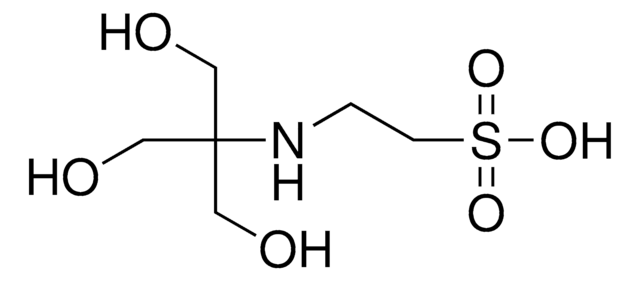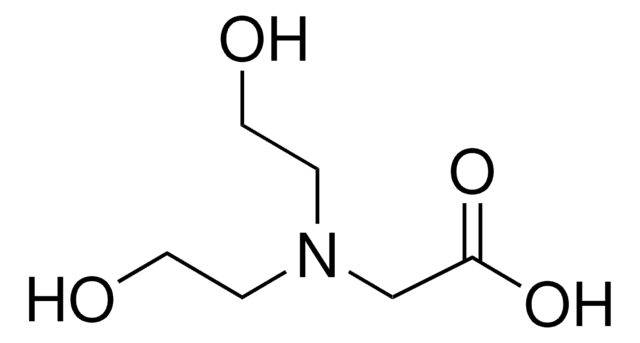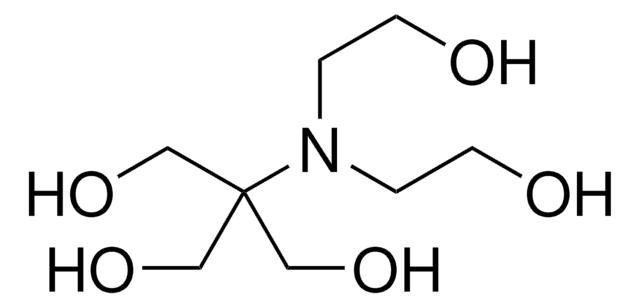T5816
Tricina
BioPerformance Certified, suitable for cell culture, ≥99% (titration)
Sinonimo/i:
N-[tris(idrossimetil)metil]glicina
About This Item
Prodotti consigliati
Grado
BioPerformance Certified
Saggio
≥99% (titration)
Stato
crystalline powder
Condizioni di stoccaggio
dry at room temperature
tecniche
cell culture | mammalian: suitable
Impurezze
endotoxin and total aerobic microbial count, tested
Colore
white
Intervallo di pH utile
7.4-8.8
pKa (25 °C)
8.1
Punto di fusione
187 °C
Cationi in tracce
heavy metals (as Pb): ≤5 ppm
Assorbimento
≤0.02 at 290 at 20%
applicazioni
diagnostic assay manufacturing
general analytical
life science and biopharma
sample preparation
Stringa SMILE
OCC(CO)(CO)NCC(O)=O
InChI
1S/C6H13NO5/c8-2-6(3-9,4-10)7-1-5(11)12/h7-10H,1-4H2,(H,11,12)
SEQKRHFRPICQDD-UHFFFAOYSA-N
Cerchi prodotti simili? Visita Guida al confronto tra prodotti
Descrizione generale
Applicazioni
Caratteristiche e vantaggi
- Suitable as a Buffer component, for Electrophoresis and Protein separation
- Effective Buffering from pH 7.4-8.8 (25 °C) with a pKa of 8.1 (25 °C)
- Tested for Endotoxins and Total Aerobic Microbial Count
- Tested to confirm low levels of heavy metal contamination, ensuring suitability for various applications
Altre note
Prodotto comparabile
Codice della classe di stoccaggio
13 - Non Combustible Solids
Classe di pericolosità dell'acqua (WGK)
WGK 3
Punto d’infiammabilità (°F)
Not applicable
Punto d’infiammabilità (°C)
Not applicable
Dispositivi di protezione individuale
Eyeshields, Gloves, type N95 (US)
Scegli una delle versioni più recenti:
Possiedi già questo prodotto?
I documenti relativi ai prodotti acquistati recentemente sono disponibili nell’Archivio dei documenti.
I clienti hanno visto anche
Il team dei nostri ricercatori vanta grande esperienza in tutte le aree della ricerca quali Life Science, scienza dei materiali, sintesi chimica, cromatografia, discipline analitiche, ecc..
Contatta l'Assistenza Tecnica.








